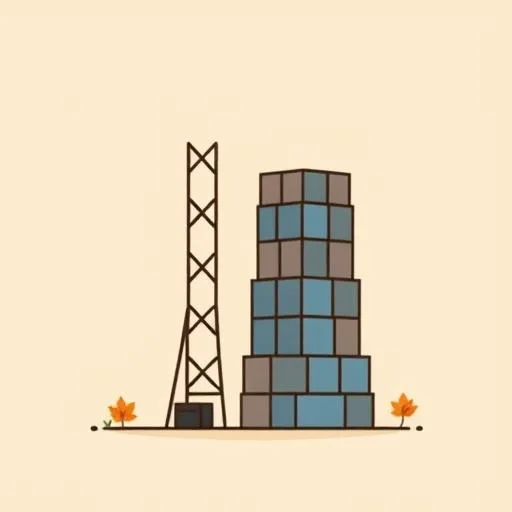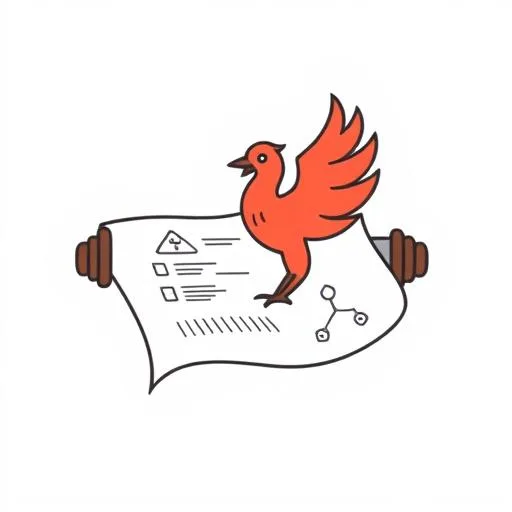
Have you ever seen it? That pure, unfiltered spark in your child’s eyes when they’ve just dreamed up the most magnificent creation ever. We were on the floor the other day, surrounded by a universe of colorful blocks, and my daughter was directing the construction of an epic, rainbow-colored skyscraper. It was going to have a slide from the top floor and a landing pad for dragons. The vision was spectacular! But every time we got more than a few levels high… TIMBER! The whole thing would wobble and crash down in a plastic avalanche. Her blueprint was flawless, but the execution? Not so much. It’s a moment every parent knows—that little gap between a brilliant idea and a thing that actually, well, stands up. It turns out, this isn’t just a playroom problem. It’s a massive challenge in the world of technology, too.
The Great Tech Tumble: When ‘Vibe Coding’ Isn’t Enough

That feeling of building on a vibe, of knowing what you want something to be but not having the right foundation, is exactly what’s been happening with a lot of artificial intelligence projects. So, what’s the real-world scale of this? It’s absolutely mind-blowing when you see the numbers. A startup called Empromptu Inc. is making waves because they’re tackling this head-on, pointing to a staggering study from MIT that shows 95% of AI pilot projects ultimately fail. WOW! Let that sink in. Ninety-five percent! That’s like building one hundred block towers and watching ninety-five of them collapse before anyone gets to play with them. Research from the RAND Corporation echoes this, noting that AI projects fail at twice the rate of other tech projects. It’s not because the ideas aren’t brilliant; it’s because making them work reliably in the real world is incredibly hard.
For years, we’ve seen flashy demos that feel like magic but crumble under pressure. Empromptu is stepping in and saying, “Enough with the wobbly towers.” They’re promising to build complete, business-ready AI applications that actually work from day one. They’re not just giving you the blocks; they’re providing the entire engineering team in a box—the foundation, the logic, the user interface, everything. They’re building the whole skyscraper, dragon landing pad and all, and making sure it’s sturdy enough to last. This is a HUGE shift from just hoping for the best to actually engineering for success.
The Magic of a Promise That Works

So, what’s their secret sauce? Empromptu talks about using a “full AI stack,” including things like Retrieval-Augmented Generation (RAG) and automated response optimization to achieve up to 98% accuracy. I know, that’s a lot of tech terms! But let’s break it down with our block tower. Think of it this way: RAG is like having a magical instruction book that not only has the plans for your specific tower but can also access a library of every tower ever built, pulling in the best, most stable designs to reinforce yours. The optimization part? That’s like having a tiny, invisible engineer who automatically adjusts the blocks in real-time to prevent any wobbles. You just describe your dream skyscraper, and a team of AI agents gets to work building a comprehensive blueprint and then constructs the real thing. You can even tweak it with simple prompts, like asking, “Can we make the dragon landing pad a little bigger?”
This isn’t just about convenience; it’s about trust. It’s the difference between a tool that’s a fun toy and one that’s a reliable partner. For anyone who has ever felt the frustration of a project falling apart—whether you’re a CEO trying to launch an AI strategy or a kid whose masterpiece just collapsed—the promise of something that just works is absolutely electrifying!
Nurturing Our Little Builders in a World of Wobbles

This whole story got me thinking—passionately—about how we raise our kids in a world where things don’t always work on the first try. We can’t shield them from the frustration of a fallen block tower or a smudged painting. And honestly, we shouldn’t! Those moments are where the real learning, the real growth, and the real magic happen. The lesson from Empromptu isn’t that failure is bad, but that having the right tools and the right mindset can help us build through it.
So how do we become the supportive “AI agents” for our kids’ creativity? It’s not about giving them the answers, but about fostering a builder’s spirit. It’s about creating a space where trying, failing, and trying again is the whole point of the game. It’s the joy of the process, not just the perfection of the final product.
Maybe tonight, after dinner, we can all try a little “project.” It could be drawing a comic book, inventing a new recipe for a snack, or, yes, building another epic block tower. The goal isn’t to make it perfect. The goal is to see what happens when we add a new idea, or when we have to figure out why the wobbly part wobbles. It’s about asking, “What if we try this?” and celebrating the discovery, no matter the outcome.
Food for Thought: From Blueprints to Resilience

Watching my daughter meticulously plan her next tower, I see a future where her generation won’t just be users of technology; they will be its architects. They’ll have tools that can turn a simple description into a functioning reality, something my generation could only dream of. But the most important tool we can give them right now isn’t an app or a device. It’s resilience. It’s the unwavering belief that a collapsed tower isn’t an ending—it’s a plot twist. It’s the first step toward building something even stronger, even more magnificent than before.
The world will always have its share of wobbly projects and failed pilots. But with a foundation of curiosity, a healthy dose of persistence, and the courage to rebuild, our kids won’t just build amazing things. They’ll build an amazing future. And watching them do it? Well, that’s the most incredible, awe-inspiring thing a parent could ever hope to see.
Inspired by recent insights from Silicon Angle, you can explore more about Empromptu’s approach to building reliable AI applications.
